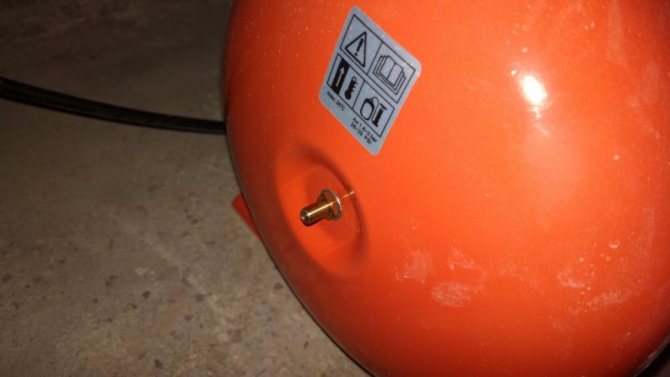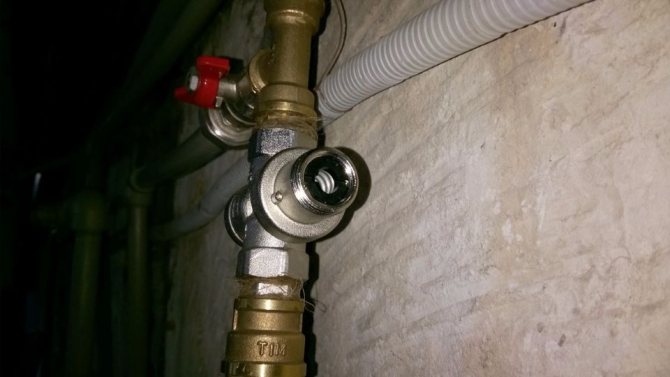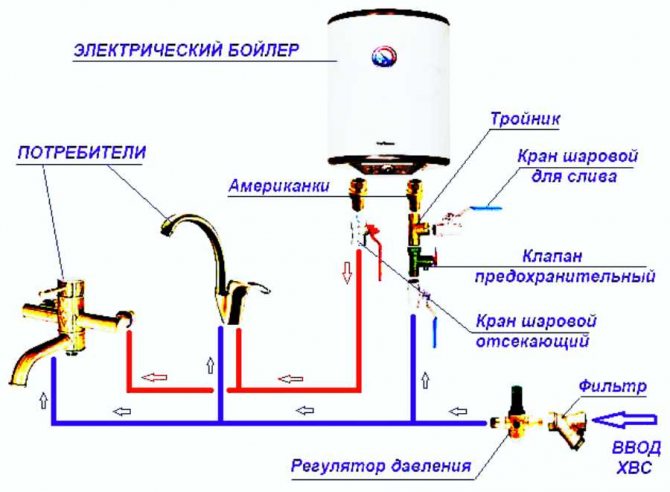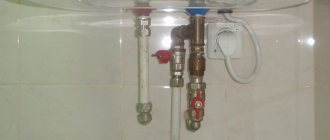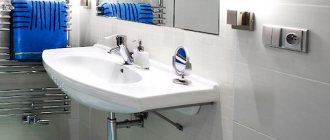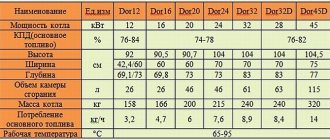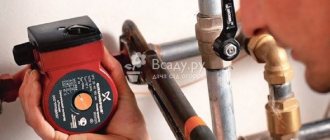What criteria should be used to choose
There are 3 main criteria for this process:
- Volume. You should not set the maximum device for this value. This may lead to financial difficulties in the future. Since more water will go to a container of sufficient volume, then the bill for its consumption will be higher. It is worth remembering that the larger the volume of the installation, the more it will come into contact with the coil, which can lead to heating of the coolant.
- Power. This criterion affects the heating of the water. For a full-fledged heating process, a water heater with an indicator of 8-12 kW is suitable.
- Diameter. This criterion depends on the area of the room where the device is installed.
How to attach a water heater to the wall
One of the disadvantages of storage units is their large mass. For example, a wall-mounted Ariston tank (50 liters) weighs 18 kg without water, gross - almost 70 kg. The net weight of a 100-liter water heater is 30 kg, the total weight easily reaches 130 kg.
It is necessary to fasten heavy boiler tanks to different walls:
- from dense materials - concrete, brick, timber, logs;
- from porous building materials - aerated concrete, foam blocks;
- to frame-type partitions, sheathed with plasterboard, OSB plywood.
Do-it-yourself installation of a water heater on a concrete wall is carried out using expansion anchors equipped with nuts. The technology is simple: we mark the attachment points along the standard tank bracket, drill holes, insert anchor bolts and fasten the boiler with nuts. Hole depth and fastener length - at least 7 cm.
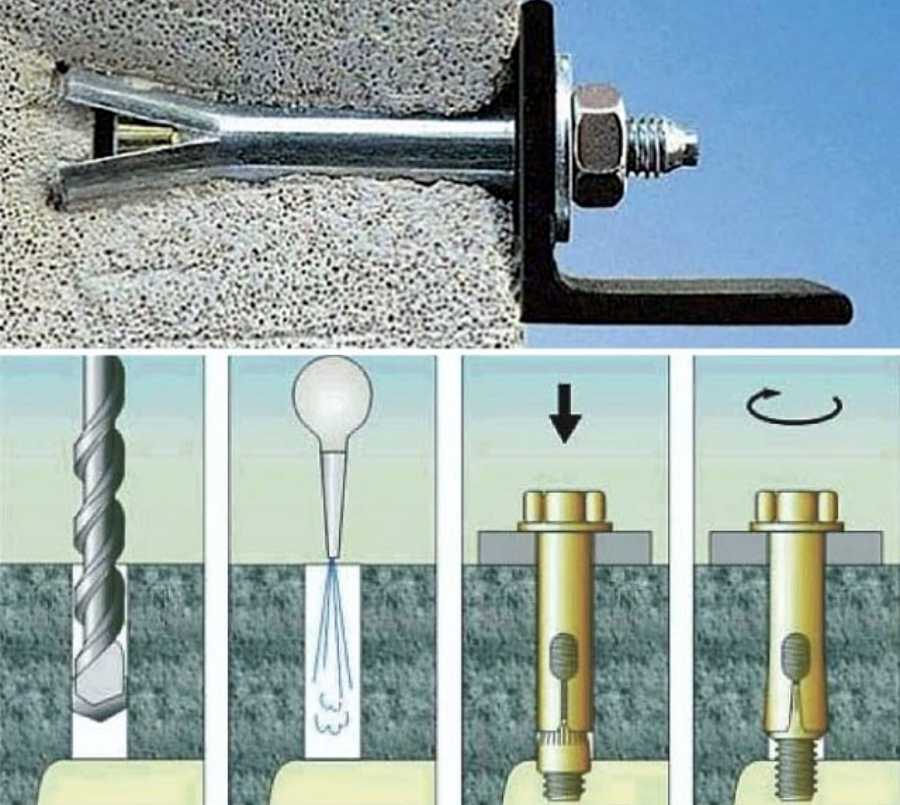
The anchor bolt is held in the concrete by expanding the end of the metal tube with a flare nut
Small devices of 30 ... 50 liters with one hanging bracket can be attached to plastic dowels and hooks (or bolts). You cannot hang water heaters with two brackets on hooks - you will not guess the exact position of the holes so that the load is evenly distributed over 4 points.
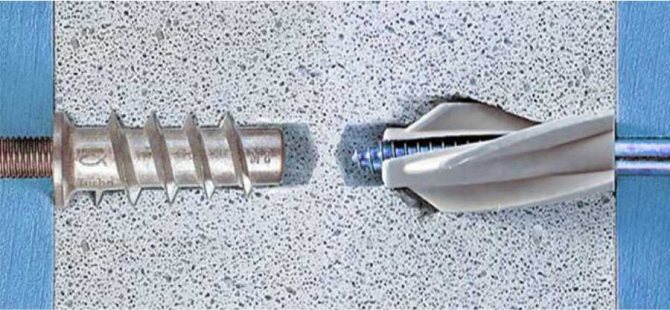

On the left is a metal dowel, on the right - plastic
In log houses and log houses, the problem is solved even easier - a bolt or hook Ø8-10 mm is screwed into a prepared hole of identical diameter. To hang the boiler on aerated concrete or porous brick, the following methods are used:
- Lightweight water heaters with a volume of 30-50 liters are attached using plastic dowels designed for foam concrete (shown below in the photo).
- Heavy tanks over 80 liters are suspended on special metal dowels, into which bolts with a conventional metric thread are screwed.
- In materials with large pores and air spaces (eg ceramic blocks) chemical anchors will hold the boiler.
- If the unit is located in a boiler room or other utility room, where appearance does not matter, a round support from a strip and 2 steel pipes is welded. The tank is fixed to the wall with simple dowels.


The most difficult thing is to install a water heater on plasterboard structures, especially after renovating an apartment, when the bathroom walls are already tiled. Although sheets of gypsum plasterboard with a thickness of 12.5 mm are able to withstand rather heavy objects, it is impossible to mount the boiler directly to the drywall, the fasteners can break out at any time.
What techniques do the masters use when installing a water heater on a plasterboard base:
- The safest way is to use wood embedded parts. The bar is inserted inside 2 vertical profiles of the frame, between them at the required height a horizontal lintel is placed - a wooden board 30 ... 50 mm thick.After sheathing, a boiler is screwed onto it.
- We trim the finished plasterboard finish with an additional sheet of gypsum board on the section of the wall where it is planned to hang the hot water tank. For fastening to a two-layer structure, we use a Hartmut dowel from the Knauff brand, which can withstand a load of 50 kg at one point.
- We make a metal plate with hooks for the boiler, fasten it to the frame profiles at 6-8 points. If wooden inserts have not been installed, then the unit over 50 liters cannot be attached to the profiles.
- Folding molly metal anchors can be used on a tiled wall. It is important here to clearly choose the length of the fastener.
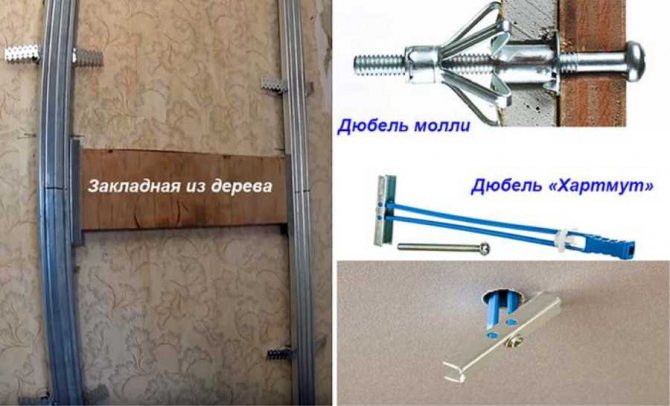

Installation and operation of a heating boiler
Boiler in the heating system
After performing all the necessary calculations of the boiler power and its volume, you can start integrating the device into the heating system.
Determining the installation site is an important task. Having decided on the purpose of the boiler in the heating system, you need to read the instructions for its installation
The best option would be to install it in the immediate vicinity of the boiler. In this case, the transfer of heat energy from the coolant to the water is most efficient.
But at the same time, you can face the following difficulties in organizing heating using a boiler:
- Domestic hot water supply. In a heating system with a solid fuel boiler, it is most convenient to place the boiler directly in the boiler room. But then, to supply heated water to the premises, you will need a separate pump and control devices for it;
- Large capacity. if heating via a boiler is planned for large residential areas. There is a problem with the placement of the heating element;
- Power supply to ensure the operation of the heating element. For the normal functioning of a boiler for heating a private house, it is also recommended to install an autonomous source of electricity.
Having solved these issues, you can proceed directly to the installation.
The temperature of the heating water through the boiler is monitored using an installed thermometer. It is not included in the standard package and therefore needs to be purchased separately.
Installation of a heating storage tank
To install the heat accumulator, it is necessary to prepare a flat area in advance. Its heavy weight should be taken into account - if necessary, a separate foundation is made or the floors are reinforced.
The best mounting option is on a separate platform. In this way, contact of the housing with the concrete surface can be avoided, which will reduce heat losses in the electric boiler for heating. Almost all manufacturers make containers on special legs. If they are absent, it is recommended to install insulation on the floor.
The procedure for connecting the boiler to the heating system is to perform the following actions:
After installing the container, you need to check its position relative to the horizon. Deviations are not allowed. Connect to heating
It is important that the diameter of the nozzles is equal. Otherwise, after connecting the boiler to the heating system, excessive hydraulic resistance will appear. If the installation is carried out in an unheated room, the boiler body is insulated. A connection to the hot water supply is made so that the boiler works not only for heating, but also for hot water supply.
Upon completion of this work, it is necessary to check the tightness of all connections and start the heating system. Within 2-3 weeks, it is recommended to measure the temperature of the water in the tank and the coolant in the pipes after the boiler is turned off. In this way, you can determine the actual time to maintain the required heating level in the heating circuit from the boiler.
In order to make full heating from the boiler, it is not recommended to use antifreeze.It is characterized by a relatively low heat capacity, which will affect the transfer of heat to water and back to the coolant.
Conditions for the correct operation of the boiler
Limescale on the heating element of the boiler
Servicing the storage tank is practically no different from carrying out the necessary procedures to maintain the operability of any electric boiler with heating elements. And in this case, in order for the boiler to work normally in the heating system of a private house, it is required to follow the manufacturer's recommendations.
This can be ensured even before the heat supply from the boiler is made. It is best to purchase models with the so-called "dry heating element". On it, the formation of scale is much slower. You should also pre-filter the water before feeding it into the storage tank.
In addition to these procedures, the following must be done:
- Check the integrity of the thermal insulation of the structure once a month;
- Control the duration of maintaining the temperature of the coolant during the operation of the heat supply through the boiler. The difference between the calculated and actual indicators should not exceed 15%;
- Checking the tightness of connections. It is recommended to replace the gaskets before each heating season. This way you can achieve more reliable heating of a private house using a boiler.
The control unit of some models is sensitive to voltage surges. To avoid damage to this expensive device, you should connect a stabilizer for the boiler in the heating system.
To clean the heating element from scale, you should dismantle it. But before that, you need to ask the seller whether the factory warranty will be preserved.
How does the boiler work in mcd. Boiler room in an apartment building
This time you will have to stomp from foot to foot and chatter teeth.
Especially true with small children - there is no laughing matter. Roughly the same when someone turns on the second tap, for example, in the kitchen, the wife washes the dishes. Solution option. Immediately after the boiler on the hot water line, you put a tiny boiler of 35 - 50 liters, and that's it! Problem solved! And this boiler does not even consume much electricity, since the boiler is already supplying hot water to it. The money is small, but the effect is obvious!
Boiler - a container for hot water, which is connected, for example, to a solid fuel boiler, and serves to heat water that will be used for hot water supply to the house. If the boiler has the ability to connect an indirect heating boiler - accordingly, such a boiler (after connecting the boiler) becomes a double-circuit one. The first circuit is a heating system (batteries, warm floors), and the second circuit is a hot water supply circuit. Thus, a boiler is needed to implement hot water supply in a house, the water in which will be heated from a heating boiler.
If hot water supply will be carried out only from an electric heater or from some independent heat sources, the second circuit of the boilers remains unused and is muffled with plugs. If there is a question of choosing an indirect heating boiler, you can advise to pay attention to the combined indirect heating boiler (heat exchanger). This type of heat exchanger has an additional heating element - Electroten. This heating element is used both separately - during a period when the boiler is not working - for example, in summer, and in combination with a working heating boiler to additionally increase the water temperature in the hot water supply system if the water in the tap is not hot enough (for example, in the inter-season - when the boiler does not work at full capacity). Thus, combined water heaters are installed and operate both from a heating boiler, from an electric heating element and from a heating element and a boiler together. And modern technology "Sukhoi TEN" (no contact with water, becauseTEN in a ceramic shell) allows you to operate such a boiler (water heater) for a very long time, because the metal heating element of such heaters does not touch the water, and, accordingly, scale and rust do not form.
Preparatory work before installing the boiler
Self-installation of an electric water heater will cost you less than the services of specialists. On average, the work will take about two hours. But when preparing for installation and directly in the process of performing work, you should follow the safety rules.
- First of all, you should decide on the model of the boiler: what kind of system it should be - flow-through or storage, how many liters it is designed for, how it will be mounted - horizontally or vertically, on a wall or under a sink, etc.
- The next step is to create a wiring diagram for the device on paper with the designation of the hot and cold water inset. Then you need to do the following:
- make room for the water heater and work;
- check the strength of the wall for the ability to withstand the weight with a double margin (for example, if the boiler has a volume of 50 liters, then fasteners are required for a weight equal to 100 kg plus the weight of the empty boiler);
- since a water heater is a very powerful consumer of energy, it is necessary to determine in advance the type of wiring (aluminum or copper) and the cross-section of the cable laid in the walls, as well as assess the ability of the wiring to withstand the load of an electric boiler (for example, to connect a 2 kW boiler, a copper cable with a cross-section is required from 2.5 mm2);
- check the condition of water pipes and risers (especially for old houses) - they must be in good condition and have points for connecting a water heater.
- Before you start installing the boiler, you need to read the instructions in order to understand the features of the model, then turn off the electricity and shut off the pipes supplying hot water. It should be remembered that if you live in a multi-storey building, this will temporarily deprive the residents of other apartments of hot water, so you need to carefully prepare for work in order to finish it as soon as possible.
You can check the strength of the wall in the following way: mount the fasteners supplied with the boiler and hang two bags of cement on it. If the mount can cope with such a load, then it will be able to withstand a water heater, which weighs half as much.
Particular attention should be paid to checking the strength of the wall when installing a large 150-liter boiler. Fastening of such a unit is made on expansion metal anchor bolts or special strong hooks.
It is recommended to use anchors with a length of 100 mm and a diameter of 10 mm.
It should be borne in mind that the installation of the water heater will require the efforts of two people, since this process is quite time consuming. Typically, the boiler is mounted in the bathroom or toilet directly above the toilet. As a rule, this place is not used in any way. At the same time, it must be approached freely.
In a small room, the boiler is usually placed horizontally to save useful space. A small water heater is attached to the wall, and units with a volume of 200 liters or more are installed on the floor.
How does an electric boiler work?
This heating element is used both separately - during a period when the boiler is not working - for example, in summer, and in combination with a working heating boiler to additionally increase the water temperature in the hot water supply system if the water in the tap is not hot enough (for example, in the inter-season - when the boiler does not work at full capacity). Thus, combined water heaters are installed and operate both from a heating boiler, from an electric heating element and from a heating element and a boiler together. And modern technology "Sukhoi TEN" (no contact with water, becauseTEN in a ceramic shell) allows you to operate such a boiler (water heater) for a very long time, because the metal heating element of such heaters does not touch the water, and, accordingly, scale and rust do not form.
See all articles "
Today, you can often hear from friends and relatives that it is profitable to pay on the meters and it helps to save the family budget, but is it really so? Let's look at this issue and find out whether it is profitable to install meters for hot and cold water and pay for them, instead of being charged according to the standard standard for water. First of all, it all depends on the composition of your family and how often and how much water you pour, for example, if you take a shower 2 times a week and live alone, then, of course, it will be beneficial to pay you according to the meter. But if you have a family of 2 or more people, then the meters may turn out to be unnecessary expenses for you, because you will have to pay a lot of money for their installation, which will pay off in a few years at best. So it's better not to rush, thinking about whether to install meters in your apartment. The law of the Russian Federation does not oblige citizens to install meters by force, you should know that you yourself decide to install meters or not. Utilities may be frightened by tariff increases and other persuasions, but it's up to you to listen to them or not. Take a look at your receipt, find out how much the neighbors are paying to make an informed decision.
It so happens that you drove into a new apartment and water metering devices are already installed in it, and you know from experience that you have a large family and it will not be profitable for you to pay by the meters, in which case you need to abandon them in order to pay by standard standard in the receipt.
Features of the
Unlike conventional water heating devices, this device has an inlet pipe (for cold water) mounted at the bottom of the storage tank, and at the outlet (for hot water) - from above.
Thus, the liquid must circulate in a closed heating circuit with a fixed temperature, which is achieved in the upper part of the tank.
Indirect heating boiler with connection to the boiler
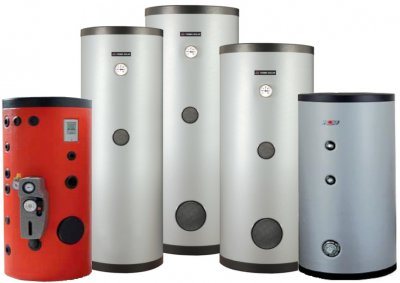

The main difference between such a device and a conventional water heater for heating is the presence of an external source of heating the coolant. It can be solar panels, a boiler, central heating.
From such an auxiliary source, a coolant passes through a coil passing through the inside of the boiler, which, in turn, heats up the liquid in the tank.
This system is protected by an insulating layer.
Underfloor heating device in the basement
The presence of a warm floor in a living space will be an excellent solution for creating a comfortable environment. Often, warm floors are made even when there is stove heating in the house, since cold air masses pass along the floor that arise when the room is ventilated.
It should be borne in mind that when installing a warm floor in the basement of a private house, special attention must be paid to thermal insulation and waterproofing of the base of the foundation. It is recommended to use a combined solution as insulation - mineral wool and expanded polystyrene. Installation of an additional waterproofing layer is necessary if the area has a high level of groundwater or there is a possibility of seasonal flooding of the basement.
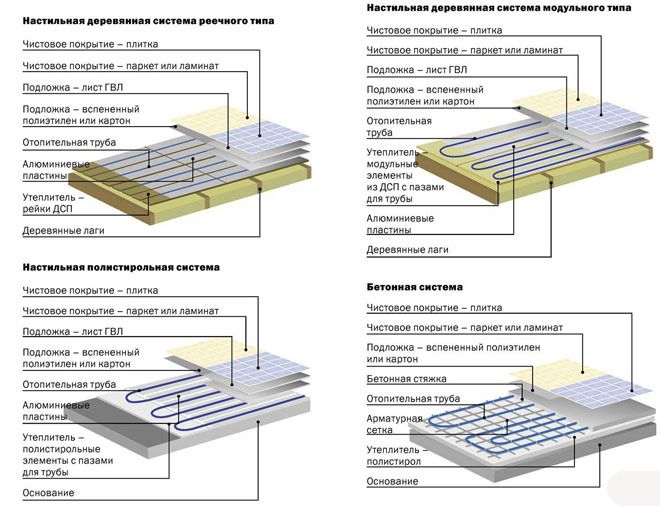

Underfloor heating installation options. Click to enlarge.
With a high groundwater level, a drainage system should be provided on the site. This is very important if an electric underfloor heating is installed in the basement, which should not be exposed to moisture in any way.
Electric storage boiler device
Knowledge of the device and the principle of operation of the unit will allow you to avoid annoying mistakes during installation and operation, and this will increase the duration and safety of use.
What are the elements of an electric boiler?
- Bracket for fixing the boiler to the supporting surface. Placed in the upper part of the device, it ensures reliable fastening of the boiler. It is made of heavy plate steel, welded to the outer casing by resistance welding.
- Cold and hot water supply pipes. The cold water connection is short and has a jet diffuser. Due to this design, cold water is evenly distributed in the lower volume and the pressure of the jet does not mix with the heated one. The heated water rises due to the difference in density between cold and hot water. The branch pipe for hot water intake has an increased length, the intake takes place in the upper most heated part of the volume.
- Thermal insulation layer. A very important element of the boiler, heat saving indicators largely depend on it. It is made from various modifications of polystyrene.
- Thermostat. Adjusts temperature values, automatically turns on / off the power. It will be placed in the lower part, you need to remember this when adjusting the temperature of heating the water.
- Internal reservoir. It can be made of stainless steel (expensive models) or ordinary sheet steel with an anti-corrosion coating.
- A heating element. Power 1.5-2.0 kW, can be "wet" or "dry".
- Magnesium anode. Purpose - to reduce the corrosion processes of the inner tank. How does it function? Water contains oxygen, which oxidizes iron. Magnesium is highly active and is the first to react with oxygen, due to this, its concentration in water decreases, and steel rusts more slowly. The frequency of replacement of the magnesium anode depends on the frequency of using the boiler and is on average 5–8 years.
- Thermometer. An ordinary bimetallic thermometer is used, the reading accuracy is ± 2–3 ° С. Some modern models have electronic control units, but this does not affect the quality of operation. But the cost of the boiler increases significantly.
- Indicator light. It turns on when voltage is applied to the heating element and turns off simultaneously with it.
- External casing. Covered with durable powder paints that reliably protect the metal from the negative influence of external factors.
- Safety and non-return valves. Manufactured in one housing, they control the pressure in the boiler and protect against excessive pressure build-up during water heating. The check valve has two functions: it prevents emergency exposure of heating elements and prevents heated water from getting back into the water supply system. In the absence of a valve, heated water enters not only for its intended purpose, but also into the entire water supply system.
- Plastic sleeve. It is used when connecting the boiler to metal pipes, lowers the voltage indicators during a short circuit of the heating element. But it cannot completely protect users, we will talk about this in the article below.
Most boilers are made of such elements. Slight technical differences do not affect the installation process.
Volume of the tank
Before choosing the type and design of the water heater, it is necessary to determine the volume of its tank. This will directly affect how often you will sit under the boiler with a bath towel in your hands, waiting for the desired number on its thermometer.


Large and powerful boiler - the guarantee of no problems with hot water for the whole family
Different sources give different values for the daily consumption of hot water per person. When making your choice, ignore these numbers. Each person is different, so even averaged values will be inappropriate. A simple instruction will help you calculate the required amount:
- Determine the required volume of warm water for the shower. For this we take an average flow rate of 6 liters per minute. Next, we multiply this number by the time it takes to swim.For a family of 3 living in the house, taking a shower for 10 minutes, the required volume of water is 180 liters.
- The comfortable temperature for swimming is 38 ° C on average. The optimal operation of the water heater assumes that water is heated to a temperature of no more than 60 ° C.
- The tap water supplied to the apartment has a different temperature, depending on the season. Let's take an extreme case: the season is winter, the water is not higher than 12 ° C.
- The volume of the boiler is determined by the formula Vb = Рв × (t ° - tт): (tv - tт)where:
- PB - the volume of water in the boiler;
- t ° - the temperature of the water that is required to be obtained at the point of draw-off;
- tt - the temperature of the water from the pipeline, required to dilute the hot water coming from the boiler.
- tv - the temperature of the water heated by the water heater.
Since 180 × (38-12) :( 60-12) = 97.5 liters, then it is the choice of a stoliter boiler that will be optimal in this case. There is no need to add extra water for dishwashing into the calculation. The hot water accumulated in the device will be enough for all residents of the apartment to take a shower consistently. Washing dishes does not consume much liquid in comparison with this value. Therefore, the volume of the boiler, calculated according to this method, is quite enough for domestic needs.
If you are not only a zealous owner, but also a thrifty person, then make your choice in favor of a water heater with a tank 20-25% more than the calculated one, just keep in mind that you will have to pay an additional amount for electricity.
DIY boiler for heating
It should be noted that the cost of factory models of a boiler for heating a summer cottage is quite high - from 7,000 rubles. and more. An alternative option is to manufacture the structure on your own.
You can use any steel container for this.
It is important that its volume corresponds to the calculated one. To organize heat supply schemes from a homemade boiler, you will need the following components:
- Tank. It is best to order a stainless steel structure or make one yourself. The body must have holes for soldering the inlet and outlet pipes;
- Coil. The best option is to install a copper structure. This material has optimal parameters for the transfer of thermal energy;
- Fastening of branch pipes for connection to heating and hot water supply.
To ensure thermal insulation, it is recommended to make a double casing. Glass wool or basalt insulation is installed between the walls. The recommended thickness of the interlayer is 5 cm. The order of installation and commissioning does not differ in any way from the factory models.
How effective is the use of a boiler in the heating of a house? It all depends on the correctness of calculations of the parameters of the entire system. Only after calculating the optimal characteristics and checking them in practice can we talk about the real efficiency of the boiler installation.
The video material shows an example of using a boiler in a heating system.
Using a boiler for a water supply system to heat a house
One of the frequently asked questions regarding the use of a boiler in a heating system is the following: is it possible to use a boiler, which is designed to simply heat domestic water, in the heating system. There is no definite answer to this question - it all depends on how branched the heating system itself is and what additional equipment is used in this case.
A boiler for a water supply system differs in that it has both holes (both the cold water inlet and the hot outlet) located at the bottom, and both of these holes are small in diameter (most often they are 0.5 inches or about 1.2 cm ).
This arrangement of holes excludes the possibility of water movement through the heating system on its own, since here cold water will not constantly "expel" hot water from the tank and force it to move through the pipes. But, in general, such a boiler can also be used in the heating system, if we supplement it with a circulation pump, which will "be responsible" for the movement of water through the heating system. The effectiveness of such a system depends on several factors:
- on how powerful the boiler itself is.The suitable power is usually determined at the rate of 1 kW per 10 square meters of heated area.
- on what power the circulation pump has
- on how branched the heating system of the house is. It is best if it does not have many branches.
As for the type of boiler, here you can use both an instantaneous and a storage water heater.
So, heating a house with a boiler is not fiction at all, but a completely viable option for a heating system. The main thing when creating such a system is to accurately calculate the required boiler power, based on the size of the house. In some cases (for example, if the area of the house is large enough), the efficiency of the system can be increased by expanding the inlet and outlet for water, as well as by upgrading the boiler itself, allowing it to increase its capacity.
07.07.2013 at 20:07
Calculation of heating of the underground floor
Often homeowners do not even think about heating basements and basements because they do not use their area as a living area. And in houses of seasonal residence, heating issues are not particularly relevant. However, if you live in a private house in the winter, the situation changes dramatically. To organize a heating system, you will need to do some preliminary calculations.
When choosing a boiler heating, it is necessary to accurately calculate the area of the room that needs to be heated (it can be either the whole house at once, or just the basement). If the area is large enough (from 500 sq. M.), Then the boiler power should be more than 40 kW. When it is necessary to heat only the basement of a private house, then simple equipment with a capacity of about 25 kW is quite enough.
When installing the stove, you must first of all decide on its type: "potbelly stove", brick stove or, possibly, a continuous burning stove. When choosing a potbelly stove, it should be borne in mind that this device can only heat a small cellar or basement of a country house, therefore, if heating of a large room is required, you should pay attention to other types of stoves.
A long burning stove is suitable for an area of up to 200 sq. m. The required power of such a stove is calculated in the same way as in the case of boiler equipment. The device of a traditional brick stove would be a good option, because in this case you will not have to determine the power. The main thing is to correctly calculate the dimensions of the chimney and equip the firebox.
If you install a stove in the basement, then it can solve the heating issues in the entire private house. The important point here is that the stove must be located in the lower rooms so that the warm air masses circulate correctly - from the bottom up. If there is no basement in the house, then the stove should be placed on the first floor.
In the event that a traditional brick oven was installed in the basement, it is important to remember that its damper should be closed when everything has already burned out and no flame arises on the coals. This will significantly save fuel by conserving heat. If this is not done, the heat emanating from the coals will simply go out into the chimney.
Features of mounting a boiler on a thin wall
Ideally, the water heater should be mounted on solid brick, concrete or block walls, since the appliance is quite heavy with water. But sometimes the device needs to be hung on a thin plasterboard, frame, wood, aerated concrete or foam block base. In this case, you will need to strengthen the wall and use special fasteners.
It is impossible to mount a water heater directly on a wooden wall for reasons of fire safety. To begin with, it must be well insulated from heating, for example, with a profile iron, which is used for the roof.
In other cases, special mounts are used:
- spiral nylon plugs;
- metal fasteners for mounting boilers with a capacity of 100 liters or more.
If you plan to hang the water heater on a wall made of foam concrete blocks, then you will need metal dowels or special chemical (adhesive) anchors for foam concrete. Chemical anchor is a versatile fastener that can withstand high loads. It is environmentally friendly and resistant to low temperatures.
Fastening to a glue anchor is done in the following way:
- A hole is drilled with the expansion of the channel by rotating the drill at an angle in different directions.
- Concrete dust is removed from the hole.
- The hole is filled with a quick-hardening mixture into which a mounting sleeve or threaded stud is inserted.
The resulting cone-shaped plug provides a fairly high fastening strength.
Heating with electrical appliances
Electrical appliances for basement heating are the simplest and most affordable option. Today, a heater is an irreplaceable device that is used when it is necessary to maintain a certain temperature regime.
In order for the heaters to work normally, high-quality electrical wiring is required in the basement of a private house, designed for their total power.
Electrical equipment can be very different. Let's consider its main types.
Convection heaters
To fully heat a large basement of a private house, convectors are best suited. Heaters of this type will help to cope with cold air even in the most bitter frosts. Convectors can be made in different types of structures, so you can choose the most convenient type (on the wall or on the floor).
Among the main advantages of such heaters are the following: the room warms up quickly and fully, the device is easy to install, it does not make noise, it can heat the entire building or individual rooms. The main disadvantage is the serious energy costs.


Convector heater.
Oil heaters
Previously, this type of equipment was widely used. For heating, it is necessary that the oil in the radiator first warms up, after which it will begin to give off heat to the room. In this case, the time spent on heating the cellar or basement is much greater than in the case of convectors.
Oil heaters are quite cheap, easy to use, but heavy and have some installation restrictions. Main advantages: long service life, no noise during operation, reasonable price, ease of installation and maintenance, the ability to move.
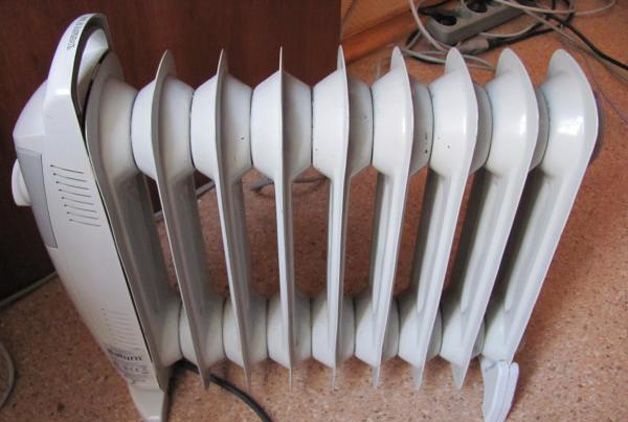

Oil radiator.
Infrared heaters
Equipment of this type for heating a basement or cellar is rarely used. The fact is that the devices work in such a way that they heat only those objects and surfaces that are under them or in front of them (in the event that the device is mounted on a wall). Thus, it will take considerable time and electricity to warm up the basement completely.
The main advantages of devices of this type: quiet operation, high level of reliability and long-term operation, safety in use, increased efficiency, the ability to heat a certain area. Among the disadvantages, we will single out: stationary installation, high ceilings for installation, with prolonged use there is a possibility of overheating.
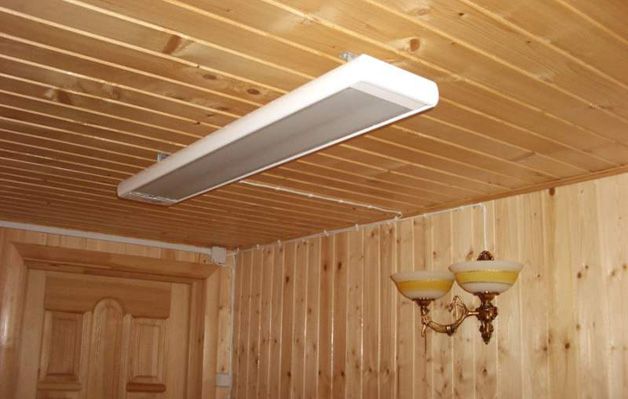

Ceiling mounted infrared heater.
Is it possible to use a boiler for hot water in the heating system
In order to fully understand what kind of device it is, you need to understand all the nuances.
What is the device
Visually, a boiler for heating looks like a container of a rather large volume.A heat source is located inside or under it.
Design and specifications
A pressure sensor and an electronic-mechanical boiler control system are located on the outer casing of the device. Next, there is a layer of thermal insulation that separates the wall of the case and the storage tank, and allows you to keep heat.
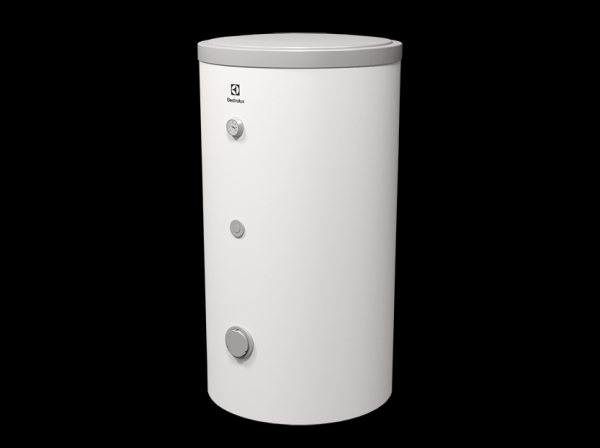

Photo 1. Boiler of indirect heating model 702.1, capacity - 712 liters, Italy.
It is advisable to choose the volume of the storage tank in which water will accumulate and warm up in the range of 200-300 liters. Lower values of the tank capacity should not be considered, since this will not be enough to heat even a small area.
Water heating is carried out using a tubular electric heater with a capacity of at least 8-12 kW.
Attention! It is important to take this indicator into account, since if it is lower, then the equipment will not cope with heating, and there will be a need for round-the-clock operation of the device
What is it for
After the storage tank is filled, the heating elements located inside it begin to heat the water to the set temperature. As the required level in degrees is reached, the liquid begins to flow through the nozzles into the pipes of the main heating system.
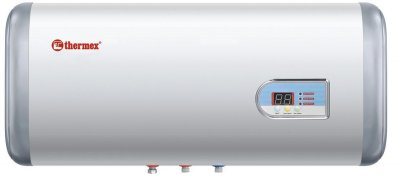

Although the principle of operation of a boiler for heating is quite simple, it is important to remember about the features of the preparatory process:
- create a circuit with closed circulation;
- anticipate the possibility of adding liquid to the coolant from water supply systems;
- install a pump that regulates the stable movement of water through pipes, shut-off valves, an expansion tank;
- to establish the structure of water filtration, the liquid should circulate along the contour already in a purified, without impurities, form.
Heating elements built into the boiler control the temperature fluctuations of the device. As soon as the user-defined value in degrees is reached, the system is automatically turned off. If the water cools down, then the opposite process occurs: its heating will start again.
Installation features
When installing a boiler in an apartment building, do not forget to determine its location, taking into account the need for periodic maintenance. Most often, the device is placed in the corner of a toilet or bathroom. This is quite practical, given the presence of both the necessary pipelines for connecting it, and a sewage system for draining water in the event of preventive maintenance. An indirect heating boiler is installed in the immediate vicinity of the boiler on the floor or wall.


Ariston's range of rectangular boilers
Don't get hung up on round models. Many companies produce rectangular or oval water heaters. Perhaps you need to choose just such a boiler so that it fits best into some niche or cabinet.
Note that large-volume boilers (from 120 liters) have a significant weight, therefore, wall fasteners should be carried out especially carefully, using powerful anchors and dowels, hammered into the reinforced concrete wall of the apartment.
Most high-volume models are designed for floor installation, so if there is plenty to choose from, then stop at this option - at least for safety reasons.
In conclusion, a mega useful video on choosing a boiler, depending on the situation:
Boiler insulation
In order for the boiler to retain heat better, it must be wrapped in polypropylene foam, polyurethane foam or isolon. The insulating material is fixed with glue or wire. Thermal insulation of the entire surface of the boiler not only helps to retain heat, but also reduces the time for heating the water by increasing the efficiency of the heat carrier. High-quality insulation will not allow the water to cool down quickly.
The second way to insulate a boiler is to place a container of a smaller volume inside a large tank. The resulting space acts as a heater.
And yet, if you realize that you are unable to install the boiler yourself, or there is a need to replace pipes due to wear, contact a specialist. Their services will not cost you too much: dismantling an old water heater - about 500 rubles, installing and connecting a new device - about 7,000 rubles. At the same time, you will be sure that the equipment is connected correctly and you will not have an accident or explosion. There is one more important point: if you install the boiler yourself, as a rule, the manufacturer's warranty will be canceled.
Is it possible to make a boiler room or boiler room in the basement of a private house
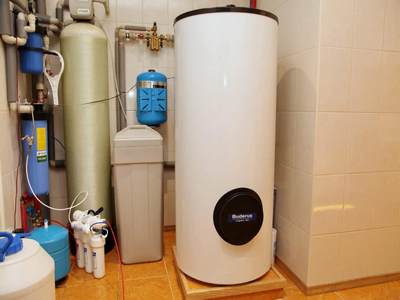

The question often arises: "Is it possible to build a boiler room in the basement of a house?" For placing a boiler room, the basement is the most convenient place, but there are limitations.
The fact is that in SNiPs such an arrangement is directly prohibited, but it must be borne in mind that this means boilers on liquefied hydrocarbon fuel (LPG), which was previously used to power equipment everywhere.
Today, the devices use natural gas, so the ban has been lifted. There are no restrictions for electric boilers.
Important! Gas fired boilers require a separate entrance.
Heating the house with a boiler
Good heating is one of the most important factors that distinguish a comfortable home from a home in which a person cannot feel comfortable. Today there are many traditional heating systems that can be used to heat a country house of any size. One of the most popular systems is gas heating. Natural gas is considered one of the cheapest heat carriers in our country. But, unfortunately, gas pipelines are far from being stretched everywhere. Therefore, heating systems that use a different heat carrier, for example, hot water, are very popular. And the basis of such a system can be an ordinary boiler.
Pros and cons of boiler-based heating
There are, perhaps, not too many advantages of such heating:
- The main advantage of such a system is simplicity. Almost any master can assemble a structure based on a boiler and connect heating pipes to it, because this does not require any special skills or complex equipment.
- Another advantage is low cost. As a rule, boilers are cheaper than electric boilers, therefore, when designing a low-power system, it is quite possible to save money.
As for the shortcomings, we talked about them throughout the article, so all that remains is to summarize:
- The capacity of household models of boilers is not enough to effectively heat an apartment. The maximum is heating the country house, and even then, not in winter, but in autumn, when there is no severe frost.
- The heating element of the device is constantly on, which, together with the regular renewal of water, leads to accelerated corrosion. Of course, the cost of the heating element is low, but replacing it is a very laborious process.


Replacing the heating element is not only a laborious process, but also dirty
If you assemble the system according to all the rules (that is, with the selection of a heater of the required power, correct piping, installation of a circulation pump in the heating system), then the savings compared to purchasing a boiler are scanty.
Summing up all of the above, we can say that electric boilers for heating can be used only in some situations. In all other cases, it is better to use heating devices more adapted for this purpose!
Storage water heaters
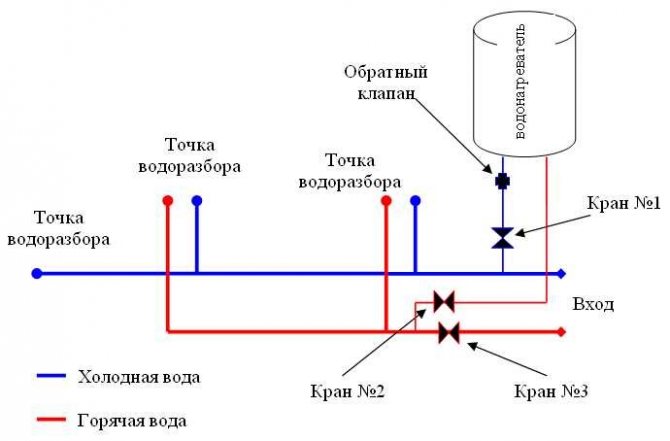

Water heater installation diagram.
They are often arranged in the form of a tank filled with water. Water is poured into it, after which it is heated to a predetermined temperature.
Such heaters are equipped with a special air gap that does not allow the water in the tank to cool down quickly. So, heating water in the morning, you can use it all day or until it runs out.Devices must be permanently connected to the network.
Due to the operation of the thermostat, the water in the tank always remains heated to a certain value: when the water cools down to a certain temperature, the heating element turns on.
The boiler of this device is mainly mounted either in the bathroom or in the toilet. Storage water heaters are attractive because they consume little electricity. However, you will have to puzzle over where to place the volumetric tank and wait at least 1-1.5 hours until the water in the tank is heated.

